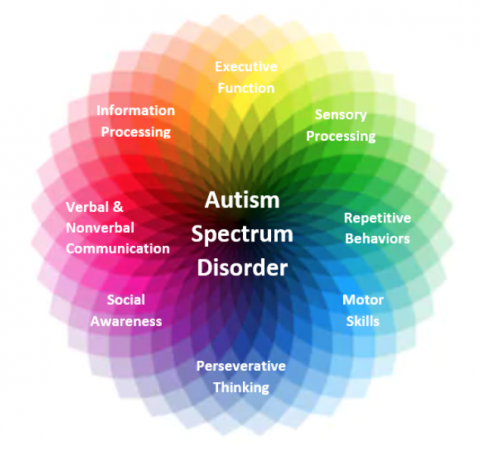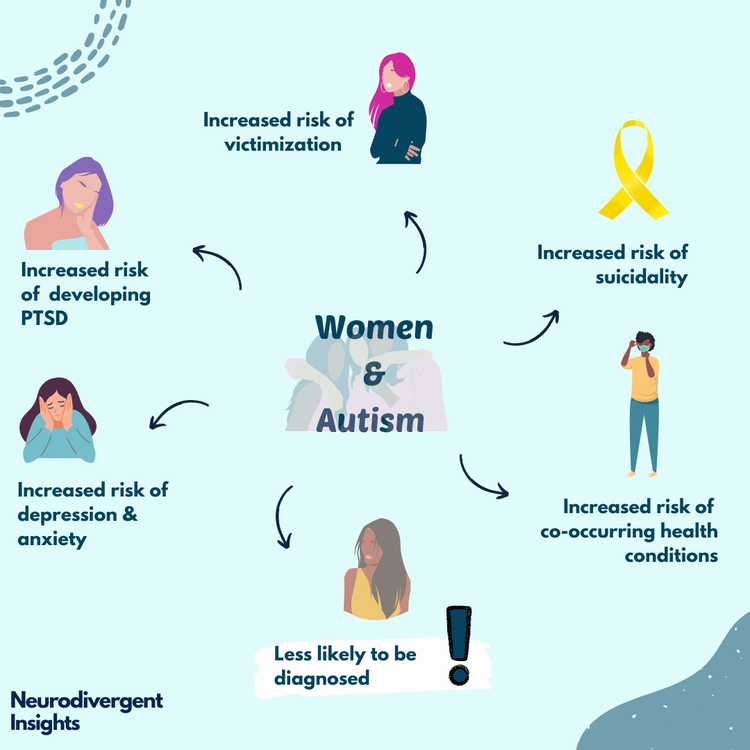The Effect of Very Early Treatment on Kids with Autism: What Parents Need to Know
The Effect of Very Early Treatment on Kids with Autism: What Parents Need to Know
Blog Article
Exploring Autism: Approaches for Effective Interaction and Interaction
Efficient communication and interaction with individuals on the autism range necessitate a thorough understanding of their distinct requirements and choices. Techniques such as employing clear language, using visual supports, and cultivating consistent regimens can significantly boost engagement and reduce anxiousness. Additionally, acknowledging the importance of non-verbal hints and shared interests paves the means for purposeful links. The complexities of these strategies disclose further considerations that warrant expedition, particularly in just how they can be adjusted to specific experiences and diverse contexts. What might these adaptations resemble in method?
Comprehending Autism Range Condition
Autism Range Problem (ASD) includes a series of neurodevelopmental conditions defined by difficulties in social interaction, interaction, and repetitive behaviors. The term "spectrum" shows the diverse manifestations and varying levels of extent experienced by people with ASD. While some may show substantial problems, others might display high-functioning traits, allowing for greater self-reliance in every day life.
The onset of ASD typically occurs in very early youth, with indications commonly recognizable by age two. Early signs may include postponed speech development, limited eye call, and problems in understanding social cues. The precise etiology of ASD continues to be vague, research study suggests a combination of environmental and genetic elements plays a vital duty in its advancement.
As an outcome, treatments and support customized to individual demands are important for cultivating communication and social skills. Identifying the intricacy of ASD is essential for promoting awareness, approval, and effective methods that facilitate significant communications with individuals on the range.

Significance of Clear Interaction
Effective interaction is important for fostering understanding and link, specifically for people with Autism Spectrum Problem (ASD) Clear communication not only helps with social communications however likewise boosts the individual's capacity to share their feelings, needs, and thoughts. For people with ASD, the nuances of language can frequently be testing; therefore, using simple and distinct language is crucial.
Furthermore, clear communication aids minimize stress and stress and anxiety that may develop from misunderstandings. When messages are shared in a regular and straight manner, people with ASD are much better equipped to interpret info precisely, which can substantially improve their social involvement and engagement in different setups.
Establishing regimens and using visual supports can better bolster clear interaction. These approaches give individuals with foreseeable structures that aid understanding and retention of details. Additionally, actively being and listening client during interactions advertises an encouraging environment where individuals with ASD feel valued and understood.
Inevitably, focusing on clear interaction not just encourages people with ASD yet additionally cultivates more purposeful connections with their peers, caretakers, and the wider area, leading the means for comprehensive communications and joint partnerships. - autism
Non-Verbal Interaction Methods
Communication extends past words, and for people with Autism Range Condition (ASD), non-verbal hints play a considerable duty in communications. Non-verbal interaction techniques can have a peek here include faces, motions, body movement, and eye contact, all of which work as essential components for conveying feelings and objectives.
Comprehending and interpreting these non-verbal signals can enhance communications with individuals with ASD. As an example, a warm smile or open posture can produce a welcoming atmosphere, encouraging engagement. Utilizing aesthetic aids-- such as photo cards or icons-- can connect communication spaces and assist communicate messages much more successfully.
It is likewise vital to be conscious of personal area, as individuals with ASD may have different convenience levels pertaining to closeness. Observing their responses to physical closeness can notify appropriate modifications.

Creating Encouraging Settings
Producing a supportive setting is important for fostering positive interactions and enhancing the well-being of individuals with why not try this out Autism Range Condition (ASD) Such settings can considerably decrease anxiety and produce a feeling of safety and security, permitting people to reveal themselves much more easily.
To achieve this, it is vital to think about sensory sensitivities that individuals with ASD may experience. Changing the physical area to consist of soft lights, very little history sound, and comfy seats can develop a calming environment. Furthermore, making use of regular regimens and clear visual timetables can help individuals expect changes and decrease unpredictability, additional promoting convenience.
Social spaces must be structured to minimize frustrating stimuli while providing possibilities for involvement in preferred activities. Promoting areas designated for quiet time can likewise act as a sanctuary during minutes of anxiety. Significantly, including elements of selection empowers individuals, allowing them to exercise agency in their setting.

Motivating Social Interactions
Cultivating social interactions among individuals with Autism Range Problem (ASD) calls for willful strategies that prioritize convenience and involvement. Developing predictable regimens can help in reducing anxiousness, making social settings much more approachable. Producing organized atmospheres with defined duties and roles enables individuals to engage without the overwhelming stress of unstructured social dynamics.
Integrating rate of interests and strengths right into social activities can work as a catalyst for communication. For instance, organizing group tasks around shared leisure activities or topics of fascination can promote all-natural conversations and links. Additionally, utilizing visual assistances, such as social manuscripts or photographic routines, can assist in understanding social cues and expectations.
Designing suitable social habits is critical - autism. Grownups and peers need to demonstrate efficient interaction strategies, consisting of active listening and turn-taking. Role-playing situations can additionally provide a secure space for people to practice these abilities
Last but not least, cultivating peer relationships through inclusive methods is essential. Motivating inclusive playdates or team trips can produce possibilities for socializing in a comfortable setup. By applying these caregivers, strategies and instructors can substantially improve social interactions for people with ASD, advertising their general social growth and well-being.
Final Thought
In conclusion, effective communication and communication approaches are necessary for see here now supporting individuals with Autism Range Disorder. Emphasizing clear language, including non-verbal hints, and establishing foreseeable routines considerably improve engagement and reduce anxiousness. Creating supportive environments cultivates risk-free social communications, while encouraging shared passions helps with purposeful connections. Inevitably, these techniques encourage people with autism to navigate social landscapes, promoting their general wellness and allowing the growth of long-term connections.
Efficient communication and communication with individuals on the autism spectrum demand a comprehensive understanding of their special requirements and choices. Clear interaction not just helps with social interactions however likewise improves the individual's ability to express their emotions, thoughts, and needs.Promoting social communications amongst individuals with Autism Range Condition (ASD) requires willful methods that focus on convenience and involvement. By implementing these teachers, techniques and caretakers can significantly boost social interactions for individuals with ASD, promoting their overall social development and health.
In conclusion, effective communication and interaction approaches are vital for sustaining people with Autism Spectrum Condition.
Report this page